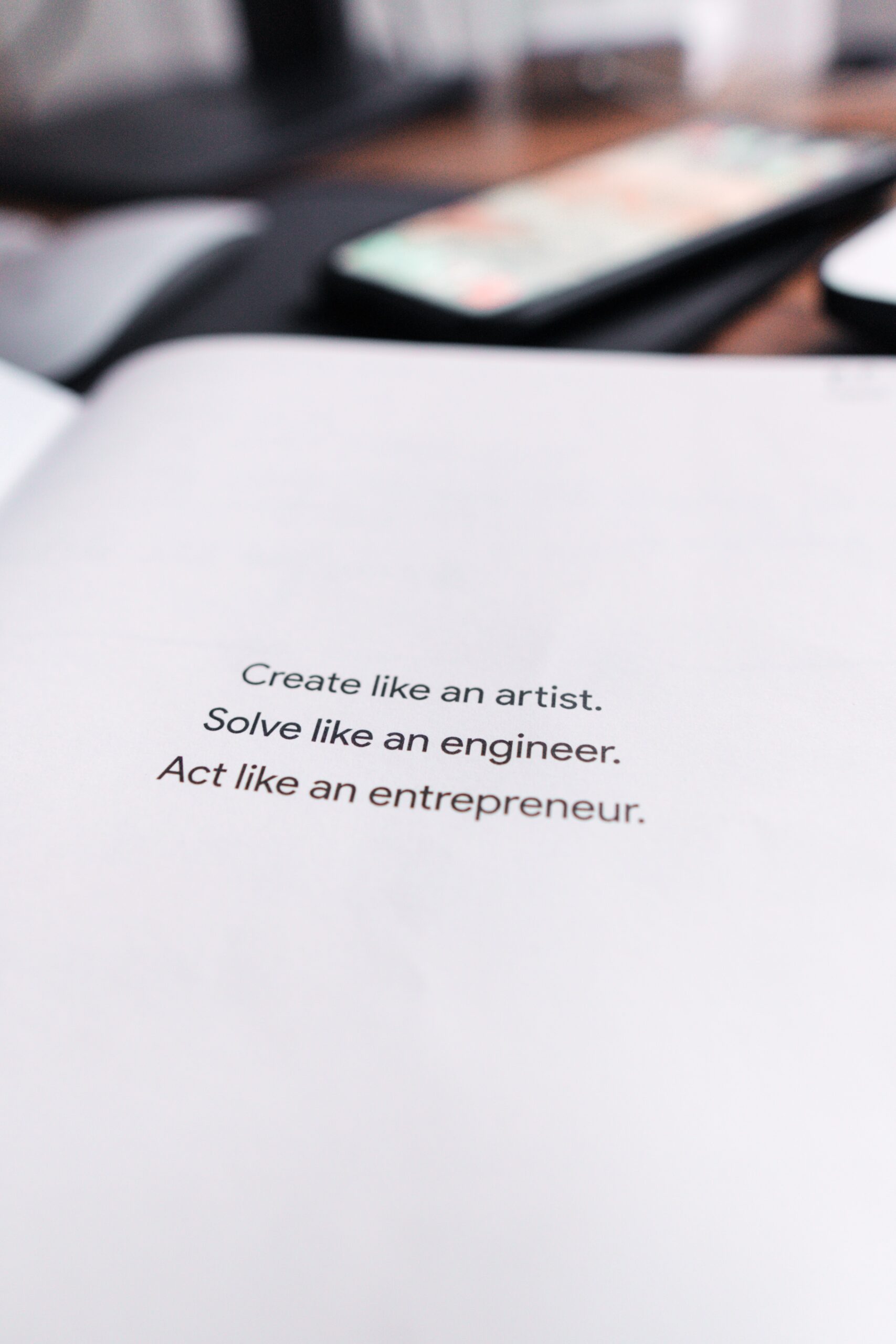We humans have an amazing capacity for creativity. We base it on our unique ability to imagine things that don’t exist. Imagination – what a thing! We use it all the time. When someone tells us about their morning, we see the cereal in front of us. When one of our loved ones does not answer the phone, we can see the most horrible scenarios in our mind.
But what separates creativity from fantasies, imaginings, and worries?
The word creativity obviously comes from the Latin. Specifically, the verb crere, to create. With a fancy reference to a French guy who died in 1650 due to the chilly castle in Stockholm (but also point out something important): Creo ergo sum. I create therefore I am.
When we talk about this in Swedish, we tend to talk about creativity or being creative rather than about creating. Creativity is then a noun and creative an adjective, created from that old Latin verb. Which is kind of interesting. It immediately becomes something you have or are, not something you do.
And here we come back to what separates creativity from imagination. You have to do something with your imagination, pick out what you imagined inside your head and actually create something on the outside. And seen that way, being creative is a three-step process, each of which uses strong human capacities.
Or no, there is clearly a step 0, namely the fact that we are constantly receiving impressions that can inspire, worry, arouse new thoughts. This is a continuous flow of multitudes of impressions. The trick is, of course, to manage to catch the gold nuggets that glimmer. Or maybe it’s the grain of sand that feels a bit annoying. Or the unexpected, elusive, which perhaps neither glimmers nor annoy but actually touches us. What we usually just call inspiration.
The first step of creativity is about taking that inspiration, that seed into a more active inner process. After all, we have a strong cognitive ability to imagine things mentally that do not currently exist in our concrete, manifest surroundings. It can be about objects, events, situations, experiences that we fantasize about, whether we worry, daydream, or solve problems. The basis here is therefore the imagination, something that can also be cultivated and taken advantage of. Then it is necessary to allow oneself to play further with one’s idea or thought. Let your imagination take it further, make it bigger and explore what possibilities you experience.
The second important step taps into our capacity to realize, do, solve, and create in the external. It’s about taking hold of some of all our fantasies, ideas, dreams and picking them out of our inner self and beginning to form a manifestation of some kind on the outside. The usual images of this are perhaps the artistic ones, to see a image inside your head and paint a picture, to hear music and sit down at the piano or write down the notes, to catch words and write them down on a piece of paper. But also, to see a need for clarity and create a new excel sheet with flexible formulas and macros or to draw attention to a bottleneck and form a new routine.
And finally, our creativity does not reach its full potential if we do not share and transmit what we have created to others in some way. Humanity’s capacity to help others dates to our earliest history, when one of our strongest success factors as a species was our ability to cooperate and help each other. And in this I think our longing to share lies. We want and need to be in contact with others even when it comes to our ideas, stories, what we create. And it is also only here that the full potential of creativity is reached, when ideas, work, stories flow and are shared between us. It is in this that we ourselves develop and grow and in turn develop the context we are in.
Of course, the transitions between these steps are sliding. One way to spin one’s idea is to associate in words or images and that is where the external manifestation begins to take shape. Playing or co-creating with someone else is a way of shaping and sharpening the form you give your imagination on the outside. And with this, we start transmitting and sharing.
Another aspect of the transitions between the three stages, imagination, manifesting and transmission, is that it often comes at a cost for us to take that next step. It can feel scary, difficult, unfamiliar to go from having a mental image to a form on the outside and perhaps even more so when we have to share it with someone else. And here we need to both grasp what it is we want and what it is we long for to actually move forward in the process, because it is actually only in the third step that our creativity reaches all the way. The support we need to give ourselves here is our courage and our self-compassion. To equally challenge ourselves and remind us that our worth is not in our achievements and that the task is not to succeed but to seek meaning.
Try it! You create (all the time) – therefor you are!
